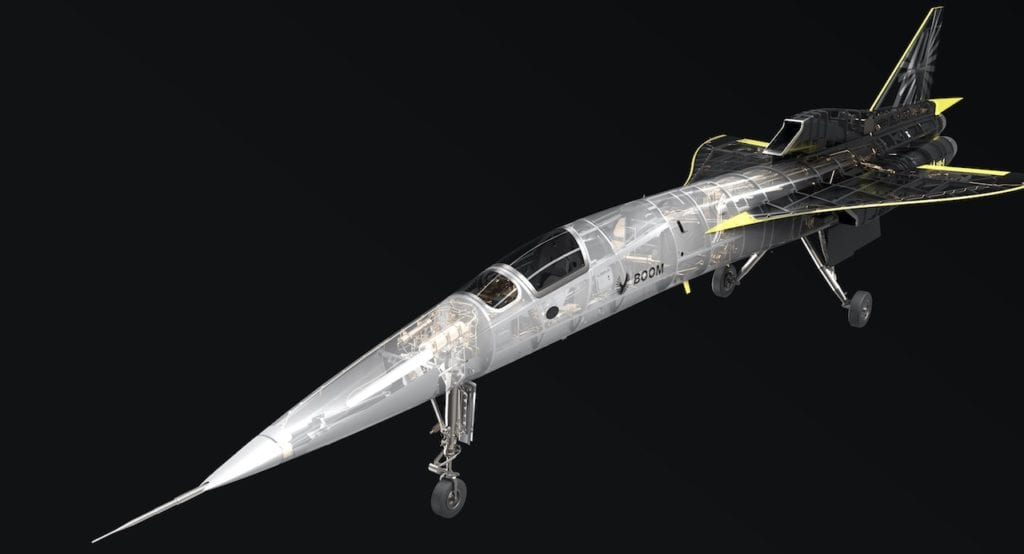
An x-ray rendering of XB-1, Boom’s supersonic demonstrator aircraft. Photo: Boom Supersonic
Boom Supersonic is anticipating the rollout of its supersonic demonstrator aircraft, XB-1, by the summer, and has started 2020 by adding a former Lockheed Martin chief technology officer to its advisory board, establishing a new flight testing partnership and releasing a 3D simulation of the demonstrator to provide an online virtual tour.
XB-1 is Boom’s sub scale prototype and supersonic demonstrator aircraft, that the company is developing at its Denver, Colorado hangar and plans to use for supersonic flight testing prior to eventually producing its Overture airliner that is expected to be ready to enter into service by 2025. Like Overture, XB-1 will fly at Mach 2.2 using the same aerodynamic design, materials and avionics systems as Overture.
Ahead of the completion of XB-1, Boom is providing a three-dimensional virtual tour of the aircraft, as shown below.
According to Boom, XB-1 has a team of 86 engineers working on it with 286 partners and suppliers that have produced 1,229 approved drawings of the design. Through the end of January, the team has assembled 3,488 unique parts on the aircraft.
Prior to releasing the virtual tour of XB-1, Boom took another step toward bringing supersonic commercial air travel back by adding Ray Johnson to its advisory board. Johnson previously served as senior vice president and chief technology officer of Lockheed Martin, where he directed engineering, technology, production operations and program management for one of the world’s largest aerospace and defense contractors.
“As part of Boom’s advisory board, Dr. Johnson will be supporting the continued development of Boom’s organizational structure, manufacturing processes, and leadership framework,” a representative for Boom told Avionics International in an emailed statement.

Boom’s team recently completed the cockpit-to-fuselage bonding for the XB-1 in their Denver, Colorado hangar, located at Centennial Airport.
A strategic partnership has also been established between Boom and Flight Research Inc. in an effort to bring flight testing of XB-1 to a “supersonic corridor” stretching across the Mojave Desert, according to Boom. FRI will support XB-1 flight testing by providing a T-38 Talon two-seat twin engine supersonic jet trainer that will also serve as a chase aircraft during flight testing.
“We specifically selected the T-38 for our flight test program because of its similar flight characteristics and ability to chase XB-1 through low speed supersonic flight. This is an exciting time at Boom and we’re glad to have a partner in FRI to help us get to the finish line,” Blake Scholl, founder and CEO of Boom said of the FRI partnership.
During a September 2019 interview with Avionics, Chris “Duff” Guarente, a test pilot for Boom, explained how they’re also using a full flight simulator to help with the development of XB-1’s pilot interface.
After rolling the XB-1 out of the hangar this summer, Boom expects to begin flight testing later this year. Boom’s first-generation airliner, Overture, will have maximum seating capacity for 50 passengers at ticket prices that are comparable to the cost of a roundtrip business-class commercial airline ticket today.